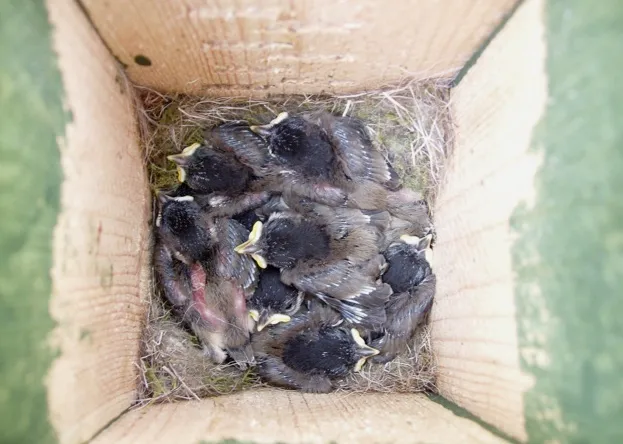A new study has compared the microclimate of tree cavities and nestboxes, and has found differences in temperature and humidity that may affect the chicks.
Nestboxes were found to be significantly less humid and less insulated against outside temperatures than the tree cavities, which may expose chicks to dehydration or overheating.

“These nestbox conditions are also more attractive to parasites, such as fleas,” said Dr Richard Broughton, from the Centre of Ecology and Hydrology, and a co-author of the paper, “and even competitors, such as nesting bumblebees or wasps, which can oust the birds.”
The drier nestbox conditions can also lead to old nest material becoming ‘mummified’, which can build up and make the nestboxes unusable after a few years, unless they cleaned out by people.
In comparison, nests undergo natural decomposition in tree cavities, which means the nest site can be used again in the following spring.
The study compared tree cavities and nestboxes used by marsh tits at study sites in the UK and in Poland.
The researchers suggest that though nestboxes can be useful, they are not a direct substitute for tree cavities.
The greatest diversity of cavities are found in large, mature trees, which are often removed in managed forests and urban areas.
“A more preferable conservation solution in the long-term is the preservation of old, mature trees that provide a variety of natural cavities,” said Broughton.

